Anna Tsing is professor of anthropology at the University of Santa Cruz, California and the Nils Bohr professor at Aarhus University, Denmark, where she heads the Living in the Anthropocene research project. During an interview on the 23rd of October 2015 we spoke about the developments of professor Anna Tsing’s research, ethnography, multispecies landscapes, and the Anthropocene. Anna Tsing is known for her research on global interconnections and the environment, and for her books In the Realm of the Diamond Queen (1995) and Friction (2005) among others. Her latest book The Mushroom At the End of the World: On the Possibility of Life in Capitalist Ruins (2015) has just been published by Princeton University Press.
Maija Lassila: In terms of the environmental focus in your research, how did you end up writing Friction: Ethnography of Global Connection (2005)?
Anna Tsing: The environmental focus came out of the fieldwork. I’m really a believer in that ethnographic method. It leads you to the ethnographic situation, to inform your analytic questions and frameworks. When I was doing my PhD research I was impressed how I learned to see landscape. It was completely surprising to me. I still remember walking to a place where you could see out over the mountains and people explained that this was something beautiful, describing ‘here’s the place I lived five years ago’, or ‘my uncle lived over there’. It could be seen because the vegetation changed, and they identified every place they could see through these personal and communal histories. That was insightful to me and changed how I saw landscape.
When I planned a second project, I first wanted to do research about the landscape, the issue of how landscapes become historical. I did preliminary research, but the logging crisis had already begun. Instead of everyone talking about their histories there, people wanted to talk about the fact that these logging companies had come and were destroying the forest. The social and historical nature of the landscape had to be incorporated into the new crisis that was happening and changing my fieldwork site. It was really a drastic transition. When earlier it had been about historical continuities that could be seen in landscape patterns, this new crisis was about landscape transformations that utterly changed everything. So Friction was re-designed over and over again in relation to what was happening. I allowed myself to follow the developments, for example, meeting the Indonesian nature lovers in the process.
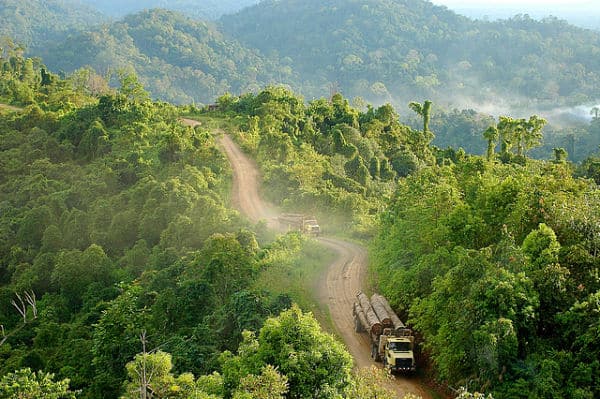
In Friction you describe in the mid- 1990’s immense forest destruction in South East Kalimantan by logging companies. Both in your descriptions of frontier areas, and how different people encounter each other in those frontiers, there is a marginality, a messiness and an awkwardness present. How and why did you begin to focus on this messiness and marginality in your research?
The marginality came first in In the Realm of the Diamond Queen (1993). It had to do with the self-perception, and others’ perception of what it meant to be on the edge of the state, on the edge of national projects. The messiness probably came out of that ethnographic situation in a slightly different way. I worked among personal encounters and community factions that were forming. In that process the awkward, messy nature of what comes out of interactions became clear. It can’t be said that there is one overall structure to everything because people were continually showing me different sides of the situation, and the kind of contingencies through which a particular outcome had occurred.
Was there not a straight or main story line?
There was not a single story that was easy to impose on the situation. Things had certain fluidity to them, which I guess required paying attention to the awkward interactions. Some of it had to do with misunderstandings, which is something that I talk about in Friction. These scale-making projects don’t work together very well. That brings me back to the marginality part that you talked about because margins are not exemplars of the imagination of the people at the center. The people at the center have a particular way of understanding the situation that actually doesn’t fit at all. In those misunderstandings you get a sense that they are messy and awkward. I was continually struck during interviews for Friction in Jakarta and the countryside; the interviews did not match up, even when people were talking about the same thing.
Do you think that messiness is present in all social interaction?
I do. I think it is present even in those kinds of situations where people stress the ‘overarching order’, where they have to figure out a way to suppress the messiness for a little while. However, you can’t repress it.
In your latest projects on multispecies worlds, and in Matsutake Worlds Research Group you have focused on more-than-human landscapes, on landscapes and the world made of multispecies connections and histories. In your research in South East Kalimantan from the beginning of the 1980’s, were you already thinking of the landscape as a multispecies place?
I think I was not explicitly, but I was already interested and in part because the ethnography brought me to it. People knew so much about plants and animals and brought them to life when seeing and describing a landscape. However, I didn’t pursue it much. In the new Matsutake project, the interest came from trying to learn something about the mushrooms and listening to people tell me about these mushrooms. I realized that to learn about mushrooms you have to learn about the interaction between fungi and trees, and how the interaction makes forests and changes landscapes. Something also happened in anthropology that made this a very exciting time to do this work. An interest in how interspecies interaction creates who we are and what are landscapes had popped up. It is fascinating how people working on themes like ethnicity or gender, or political revolutions or state are suddenly interested in multispecies relations.
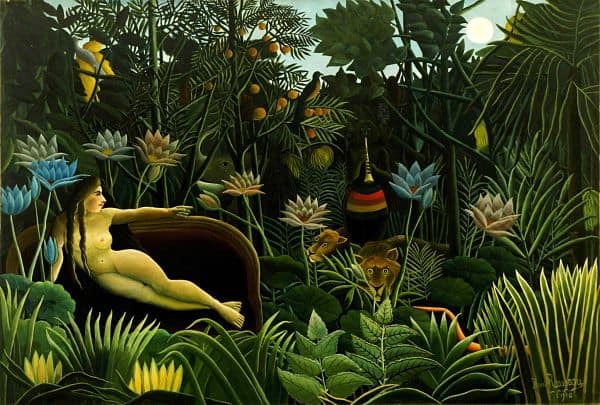
It seems that the multispecies research has really started to flourish in recent times.
That is because there are new things happening in the natural sciences that make it possible to have collaborations that weren’t there before. For example, developmental biology has addressed multi-species relations, exploring what allows organisms to develop and become what they are. So there’s a possibility for a dialogue. This is for ecologists too who are interested in disturbance dynamics and how human history plays a role in changing landscapes. It is exciting how it has come from many different disciplines including the arts. I think artists have been really a key component of making this interdisciplinary conversation happen, especially in terms of the concept of the Anthropocene.
The most interesting thing about the Anthropocene that makes it worth talking about is the interdisciplinary discussion that it sparks.
Do you think that the concept of the Anthropocene and the research around it will have some profound impact on how science and different disciplines are organized?
It could. I think the fear is, and what anthropologists share on any topic that becomes ‘hot’ is that there will be a flourish of artificial articles and books and people will get bored. The chances are good that that’s what’s going to happen. But we hope that the impact will be more profound. Especially in thinking about all the topics that were present in the conference here, on landscape, materiality and sociality. Precisely in those kinds of domains the Anthropocene could make an interesting difference in how we understand the materials that we are writing about, human and non-human.
As the 6th wave of extinction and the climate change touch all the corners of the planet, do you think that the environmental situation will do something to the way we think?
I think there is a big set of challenges for anthropologists. I agree that those planetary problems are absolutely acute right now. It is up to anthropologists to figure out a way that we can talk about the problems that doesn’t obscure global inequalities and heterogeneities, which often happens when people talk about planetary problems. What completely disappears is the kinds of things that anthropologists know about, the history of colonialism, of race, of religion, of class, the state – all the things that we have worked on over the years. I think there’s a huge challenge for anthropologists to do Anthropocene in a way that brings those kinds of issues back into the story that’s been told about the planetary issues.
In your keynote lecture you talked about the weedy landscape, and the ‘auto re-wilders’ of the landscape. In what ways do you think anthropology is especially suited to study the landscape connections between humans and other species? You also talked about noticing. Is noticing at the heart of this research?
We’ll start from the second part and I think what I have been arguing is that rather than the ‘whole sale’ adoption of what some branch of natural sciences offers, we should be more acute in our noticing.
What we’re doing in fieldwork is noticing; we notice human relations with each other; we notice spirits; we notice all kinds of things. We should start noticing the plants and animals around us too. In fact, there’s a lot we can learn just by paying attention.
That’s one of the basic ideas that I am trying to promote. I can’t think of any better discipline to study these things. We are already good at studying things that are out of order if you know what I mean. We have always been interested in kinds of people and institutions, belief systems, that are not the ones that are maybe at the center of the world, things that you’re not supposed to notice, things that are by the side of the road. I think noticing the engagement between humans and non-humans is another part of that.
There’s a kind of continuity in the Friction story here, in that those weeds and auto re-wilders are coming together in the moments of friction. It is also the plants and animals that are part of the story of what comes together and creates a history.
As many species disappear many people on the planet must experience loss. How can we approach that loss?
I think anthropologists have been slow in noticing the loss. We have to get better at noticing loss. There’s so much pressure on us to be optimistic about the state of the world that we don’t admit to loss. I’m interested in thinking about loss, and in an Anthropocene conference that I went to in September a geographer said we need to think harder about the relationship between catastrophe and mourning, and it stuck in my head. We have tons of ways of moving on, and I’m including myself in that too. Maybe staying with some of this catastrophe and mourning is useful because we haven’t done it very much in anthropology. We have been thinking about catastrophe and mourning about other social issues and humans, but in this distinctive set of issues we haven’t been willing to talk about it much. I think we could look environmental bad news more in the face, and I want to try to do that too.
In the keynote lecture you mentioned the ‘eco-modernists’?
In the Anthropocene, I’m annoyed with the developing of this louder voice from these ‘eco-modernists’. They advocate for what they call the ‘good Anthropocene’, where humans are entirely in control by using more capitalism, more technology, more of the very kinds of practices that caused the problems in the first place. Instead of being critical or imagining that their solutions have problems too, they just say ‘no, just put us in charge and we’ll take over and fix everything’. I think if the Anthropocene discussion is going to be worth anything those people can’t get the upper hand in defining what the conversation is about.
Coming back to the Matsutake project and your latest book, The Mushroom at the End of the World, the mushrooms grow in landscapes that are disturbed by humans. Did they even grow in Hiroshima after the catastrophe?
Yes, but disturbed only to a certain extent. You are not going to get a mushroom to grow in the middle of this table, or a parking lot. This mushroom grows only with trees and so if the trees are destroyed you are not going to get mushrooms anymore. This mushroom shows that we are not going to have to kill all the humans on the planet for things to stay alive. It has been possible for humans to live with other species. I think we need to look carefully at that history of what we now call the Holocene of humans and other species. We didn’t do it great and we caused a lot of extinction but there was a certain amount of human and non-human living together despite the agricultural systems, marine fisheries and other kinds of human disturbances. We’ve had those disturbances without killing everything off. Matsutake is a kind of creature from that set of disturbances. The fact that it happened to grow in Hiroshima is because not all the pine trees were killed. You can’t give the mushroom too much credit there were other factors as well.
Are they somehow a sign of hope?
They are at least the kind of stuff that humans are capable of living with. We don’t necessarily need a pristine environment to get these mushrooms and we can have something that’s working towards, and good enough, to collaborate with other species, towards something that takes into account that trees and fungi need each other. So maybe you wouldn’t want to wipe out all of the forest. Yes, in hindsight I think that I focused on Matsutake as it’s more hopeful than lots of other fungi I could have picked. It is hopeful in a certain kind of way because it grows in disturbed landscapes.
What advice would you give to scholars and students starting in anthropology?
I would like to encourage students and young scholars to stay interested in the world. Sometimes anthropology gets very involuted and people just want to debate theoretically. I would like to tell young people that while that seems like the smartest thing you could do right now in five years nobody’s going to care about those little debates around defining a term, or what some theoretical point is. Five years is a very short time. Before you even get your degree nobody cares. But if you’re curious about the world, tie that to knowing the world and to a set of those big questions and theoretical points, then your work continues to matter. I want to encourage students and young people to stay curious about the world even as they are asking their theoretical questions.
Does the curiosity come first, before the theorizing?
I think so. Of course you can’t help to bring the theorizing with it. It’s not that I don’t want people to do theory. I don’t want them to get so trapped in a small place with nothing but theory, that the world disappears and its just theory. Then I think we’re just not very good philosophers. We get obsessed with those little debates, but we don’t necessarily make things happen in those debates. We feel so excited about them in the moment they are happening. I think you can have that same excitement and have your empirical work too.
The empirical work should never be seen as a drag, a bag of bricks that you have to carry with you. It’s what makes the theory sing.
Thank you Anna Tsing!
You can watch a video of the interview here, or see all conference videos here.
Featured Image by Jef Safi (flickr, CC BY-NC-ND 2.0)


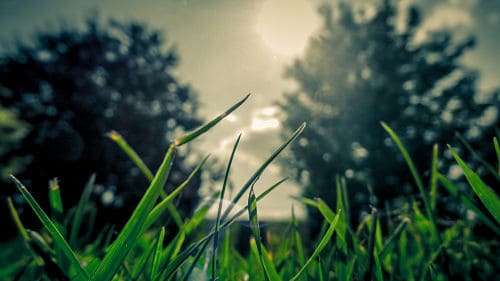
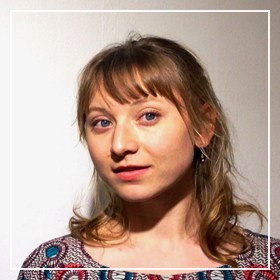

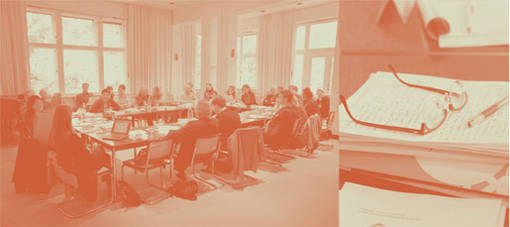

Just amazing!!!!